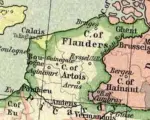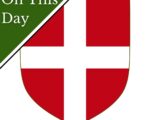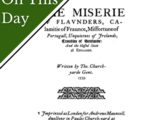
On 10th April 1540, priest Sir William Peterson, former commissary of the Archbishop of Canterbury in Calais, and William Richardson, priest of St Mary’s in Calais, were hanged, drawn and quartered in the marketplace at Calais for denying Henry VIII’s supremacy.
In his article “Martyrdoms at Calais in 1540?”, Rev. L.E. Whatmore writes of how from 1525, Sir William Peterson was “the most important priest in Calais” because of his “double capacity” as “the Archbishop’s and the Cardinal’s representative” in Calais. 1532 saw the death of William Warham, Archbishop of Canterbury, who was replaced by Thomas Cranmer. Peterson continued in his office under Cranmer and in September of that year was also appointed rector of Bonynges in the Calais Marches.
[Read More...]










